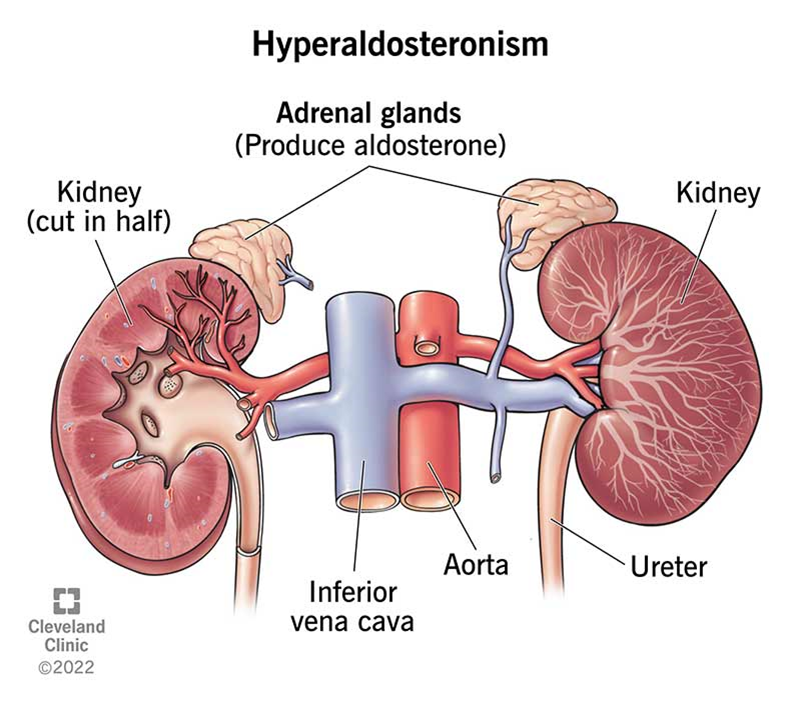A client with heart failure (HF) develops hyperaldosteronism and spironolactone is prescribed. Which instruction should the nurse include in the client’s plan of care?
Monitor skin for excessive bruising.
Replace salt with a salt substitute.
Cover your skin before going outside.
Limit the intake of foods high in potassium.
The Correct Answer is D
Choice A Reason:
Spironolactone is a potassium-sparing diuretic often prescribed for heart failure. While monitoring for side effects is important, excessive bruising is not a common side effect of spironolactone. Bruising might be more relevant for patients on anticoagulants or those with clotting disorders.
Choice B Reason:
Replacing salt with a salt substitute is not advisable for patients on spironolactone. Many salt substitutes contain potassium chloride, which can lead to hyperkalemia (high potassium levels) when combined with spironolactone. Hyperkalemia can cause serious cardiac issues, including arrhythmias.
Choice C Reason:
Covering the skin before going outside is not specifically related to the use of spironolactone. This advice might be more relevant for medications that cause photosensitivity, such as certain antibiotics or diuretics like hydrochlorothiazide, but not spironolactone.
Choice D Reason:
Limiting the intake of foods high in potassium is crucial for patients taking spironolactone. Spironolactone can increase potassium levels in the blood, and consuming high-potassium foods (like bananas, oranges, and potatoes) can exacerbate this effect, leading to hyperkalemia. Hyperkalemia can be dangerous and cause symptoms such as muscle weakness, fatigue, and cardiac arrhythmias.

Nursing Test Bank
Naxlex Comprehensive Predictor Exams
Related Questions
Correct Answer is A
Explanation
Choice A reason: Denying having coughing spells indicates that the antitussive medication benzonatate is effective. Benzonatate works by numbing the throat and lungs, reducing the cough reflex. This means that if the client is no longer experiencing coughing spells, the medication is performing its intended function.
Choice B reason: Being able to sleep through the night can be an indirect indicator of the medication’s effectiveness, but it is not as specific as denying coughing spells. While improved sleep might result from reduced coughing, it could also be influenced by other factors such as overall improvement in the client’s condition or the use of other medications.
Choice C reason: Expectorating bronchial secretions is not a direct indicator of the effectiveness of benzonatate. Benzonatate is an antitussive, meaning it suppresses the cough reflex rather than promoting the expulsion of mucus. Therefore, expectorating bronchial secretions would not be a primary measure of this medication’s effectiveness.
Choice D reason: Reporting reduced nasal discharge is also not a direct indicator of the effectiveness of benzonatate. This medication specifically targets the cough reflex and does not have a significant impact on nasal discharge. Reduced nasal discharge could be due to other factors or treatments.
Correct Answer is A
Explanation
Choice A reason: Withholding the scheduled dose and notifying the healthcare provider is the correct action because the client’s heart rate is significantly low at 48 beats per minute. Labetalol, a beta-blocker, can further reduce the heart rate, potentially leading to bradycardia or other cardiac complications. It is crucial to inform the healthcare provider to reassess the medication regimen and ensure the client’s safety.
Choice B reason: Administering the dose and monitoring the client’s blood pressure regularly is not advisable in this scenario. Although monitoring blood pressure is important, the primary concern here is the client’s low heart rate. Administering labetalol could exacerbate bradycardia, leading to severe complications.
Choice C reason: Assessing for orthostatic hypotension before administering the dose is a good practice but not the most critical action in this situation. The client’s low heart rate poses a more immediate risk than orthostatic hypotension. Therefore, withholding the medication and notifying the healthcare provider is a higher priority.
Choice D reason: Applying a telemetry monitor before administering the dose is useful for continuous cardiac monitoring, but it does not address the immediate concern of the client’s low heart rate. The priority should be to withhold the medication and consult the healthcare provider to prevent potential bradycardia.
Whether you are a student looking to ace your exams or a practicing nurse seeking to enhance your expertise , our nursing education contents will empower you with the confidence and competence to make a difference in the lives of patients and become a respected leader in the healthcare field.
Visit Naxlex, invest in your future and unlock endless possibilities with our unparalleled nursing education contents today
Report Wrong Answer on the Current Question
Do you disagree with the answer? If yes, what is your expected answer? Explain.
Kindly be descriptive with the issue you are facing.
